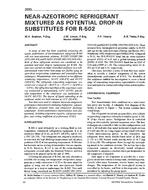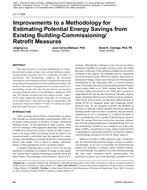Several different ratings of building airtightness are used to report the results of ,fan pressurization tests. These are generally based on airflow rates at specific reference pressures, predicted by curve fits to the test data. The statistical analysis used to obtain these curves allows estimates of the, uncertainties associated with these calculated airtightness ratings. The accuracy of the various ratings of building airtightness are important issues in airtightness standards enforcement and the evaluation of retrofit effectiveness. In this paper we present the various ai.rtightness ratings being used and discuss the uncertainties associated with these ratings due to measurement errors, fan calibration, and test conditions. We also apply standard statistical techniques to calculate confidence limits for the predicted airflow rates used in the airtightness ratings. Using data from many pressurization tests, we calculate several common airtightness ratings and determine the predictive uncertainties associated with each. This discussion is based on a data set of pressurization test results in about seventy houses of different sizes, construction, and airtightness, along with detailed measurements made on a single house. The results of this analysis have implications for the reporting of pressurization test results, for their use in models to predict natural infiltration rates, and in the enforcement of airtightness standards.
Units: Dual
Citation: Symposium, ASHRAE Transactions, 1985, vol. 91, pt. 2B, Honolulu, HI
Product Details
- Published:
- 1985
- Number of Pages:
- 15
- File Size:
- 1 file , 1.4 MB
- Product Code(s):
- D-HI-85-03-2


